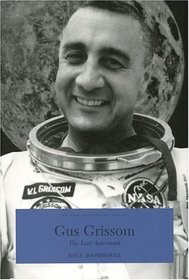Search -
Gus Grissom: The Lost Astronaut (Indiana Biography Series)
Gus Grissom The Lost Astronaut - Indiana Biography Series
In the late 1950s the Soviet Union shocked the world by placing a small satellite—Sputnik—in orbit around the earth. Treated as a technological Pearl Harbor in the United States, the Russian achievement prompted the federal government to create a civilian organization, the National Aeronautics and Space Administration, to manage the Am... more »
In the late 1950s the Soviet Union shocked the world by placing a small satellite—Sputnik—in orbit around the earth. Treated as a technological Pearl Harbor in the United States, the Russian achievement prompted the federal government to create a civilian organization, the National Aeronautics and Space Administration, to manage the Am... more »
ISBN-13: 9780871951762
ISBN-10: 0871951762
Publication Date: 9/2004
Pages: 393
Rating: 1
ISBN-10: 0871951762
Publication Date: 9/2004
Pages: 393
Rating: 1
5 stars, based on 1 rating
Publisher: Indiana Historical Society
Book Type: Hardcover
Members Wishing: 3
Reviews: Amazon | Write a Review
Book Type: Hardcover
Members Wishing: 3
Reviews: Amazon | Write a Review
Genres:
- Biographies & Memoirs >> General
- Biographies & Memoirs >> Professionals & Academics >> Astronauts
- Biographies & Memoirs >> Specific Groups >> Adventurers & Explorers




